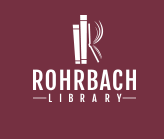Document Type
Research paper
Publication Date
12-2021
Abstract
A familiar difficulty to any new student on campus is making one’s way from classroom A to classroom B. Facilities with different wings, multiple floors, and irregular floorplans can magnify this challenge, while students with vision impairments are impacted even more by the challenge of identifying the destination. This thesis explored different methods of discovering Americans with Disabilities Act (ADA)- compliant room identifying placards (“plaques”) and identifying the text on the sign. The plaque detection was accomplished with both standard image manipulation techniques and a Histogram of Oriented Gradients (HOG) (Dalal & Triggs, 2005) object detector. The text reading utilized both standard image manipulation tools as well as an implementation of the Efficient and Accurate Scene Text detector (EAST) (Zhou et al., 2017) to isolate text, while Tesseract (Smith, 2007) was used to interpret the text. Different methods of dataset generation were utilized to train the detectors, including manual gathering, internet search scraping, and dataset generation. Results of testing these different methods on a dataset of image frames gathered from filming the Computer Science/Information Technology (CSIT) hallway of Kutztown University’s Old Main building proved the combination of HOG and EAST to be an effective method for identifying and transcribing room identification plaques. In the case of consistent visual design of rooms signs, the generated dataset proved to be nearly as effective as training the detector on real annotated images.
Creative Commons License

This work is licensed under a Creative Commons Attribution 4.0 International License.
Recommended Citation
Feilmeier, John J., "Automated Discovery and Interpretation of ADA-Compliant Door Placards" (2021). Computer Science and Information Technology Faculty. 17.
https://research.library.kutztown.edu/cisfaculty/17


